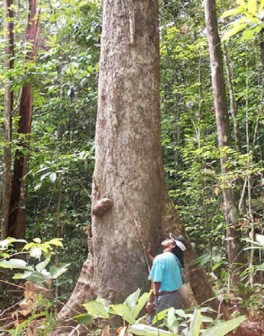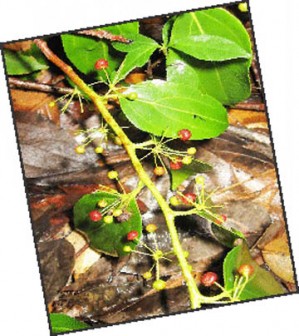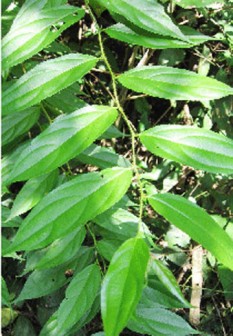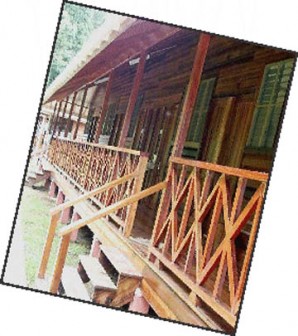An indicator of disturbance, the Kabukalli (Goupia glabra) tree is especially common in secondary forests and is frequent on sandy soils and old clearings.
Due to its seed ecophysiology and pioneer characteristics it can invade open areas rapidly and can form dense stands of secondary vegetation in the younger stages. This is often very apparent along roads and in large gaps.

of a Kabukalli tree
(Photo by R Thomas)
It is recognised as a tough and hard wood and is generally considered a heavy and durable construction timber. It is also suitable for furniture, decorative veneer, panelling, foundations and framing.
Since this species is fast growing and also exhibits versatility to ecological conditions, notably soil factors, it is considered to be a promising timber tree for forestry.
The fruits are dispersed by birds and monkeys (Saguinus spp), which utilise the whole fruit, subsequently defecating the seeds.
Rain forests are rich in biodiversity and are home to many different plants and animals as well as indigenous communities. Humans, even those who don’t live in the rain forest, rely on it for resources such as building materials (wood and lianas), medicine and fruits.

(Photo by R Thomas)
Rain forests also provide essential environmental services for life on earth; they create soil as well as prevent soil erosion, produce oxygen through photosynthesis, maintain clean water systems, and are a key defence against climate change.
The Iwokrama Rain Forest is 371,000 hectares, located in the heart of Guyana. Our mission is to develop strategies for conservation and sustainable development for local people in Guyana and the world at large. We are involved in timber, tourism and training. Come and visit us in the rain forest or at http://www .iwokrama.org.

(Photo by R Thomas)

Kabukalli wood (Photo by R Thomas)




